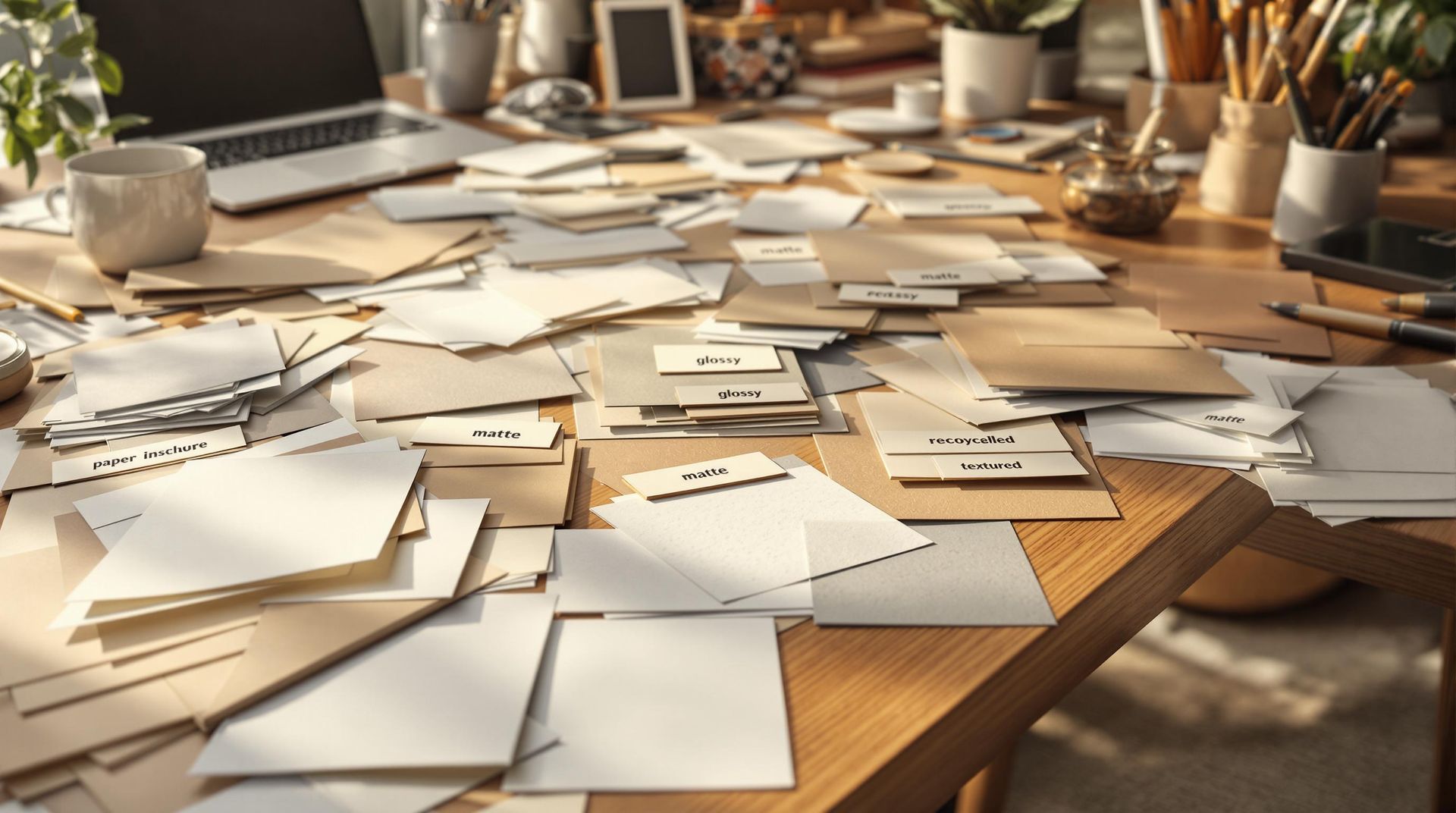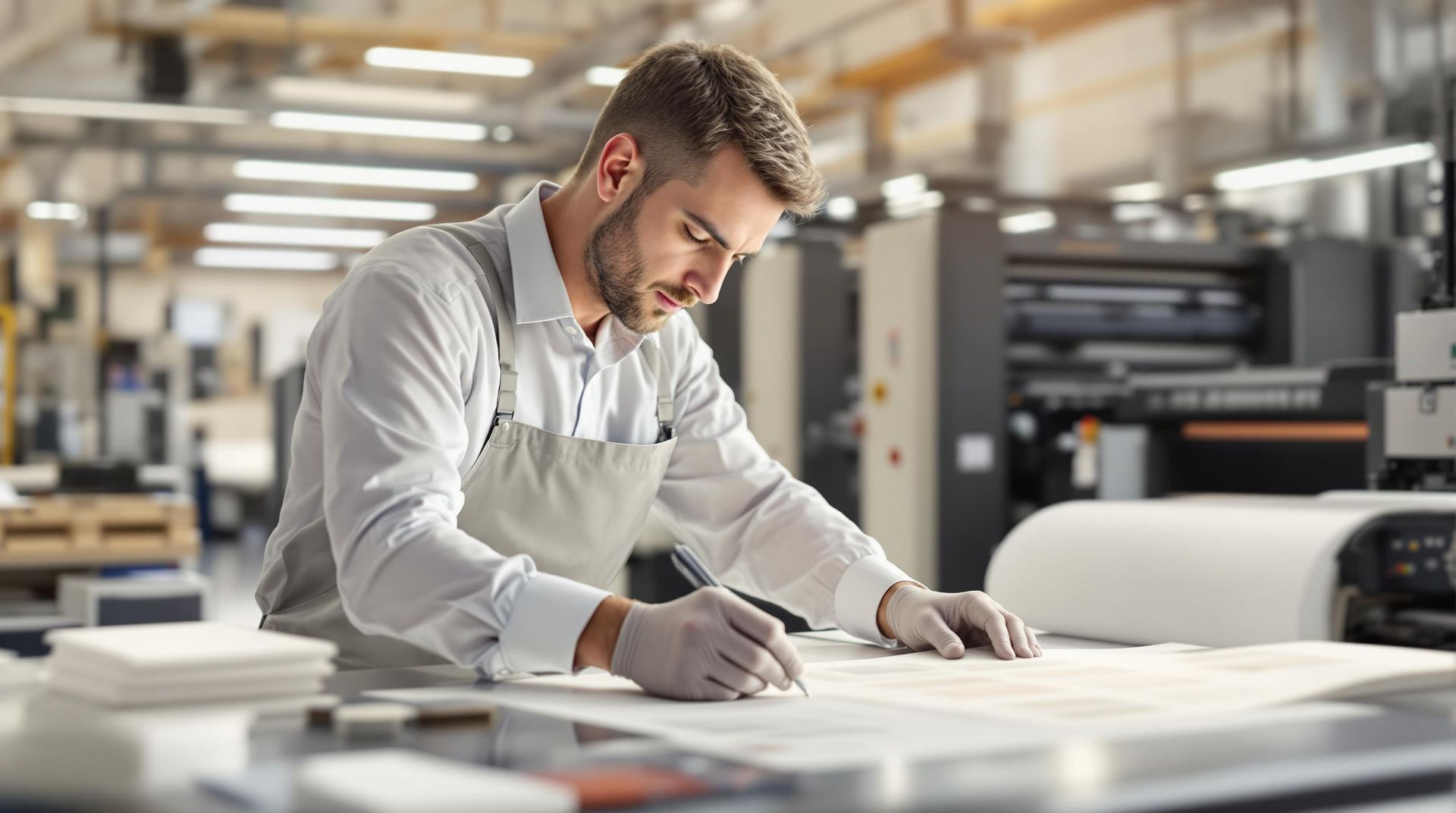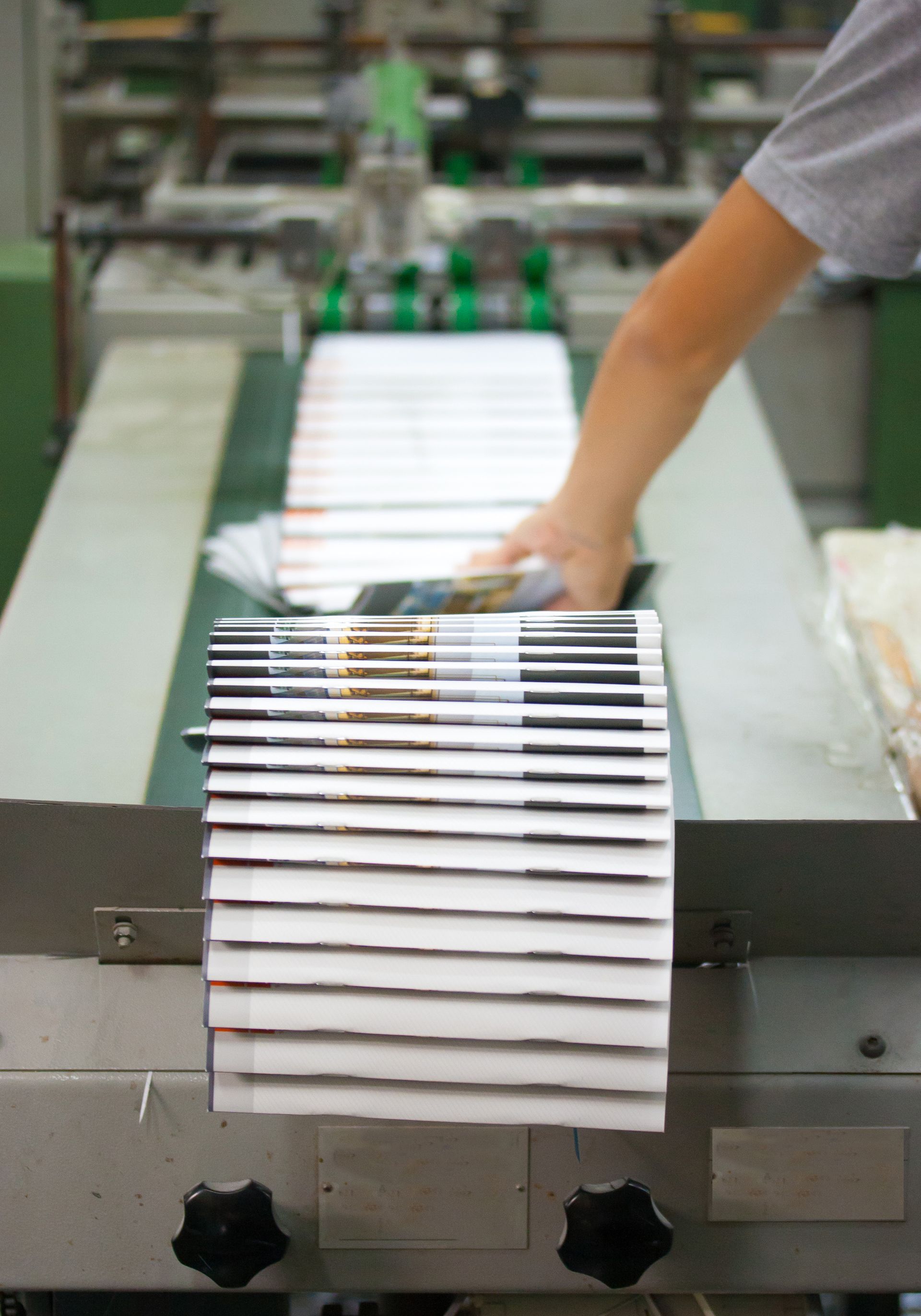CMYK vs RGB: Printing Color Models
CMYK and RGB are two essential color models used in design and printing, each serving specific purposes. Choosing the right one can save you time, money, and frustration. Here’s what you need to know:
- RGB (Red, Green, Blue): Best for screens and digital content. It uses light to create vibrant colors and has a broader color range.
- CMYK (Cyan, Magenta, Yellow, Black): Ideal for printing. It uses ink to absorb light and produces consistent, accurate colors for physical materials.
Quick Comparison:
| Feature | RGB (Digital) | CMYK (Print) |
|---|---|---|
| Process Type | Additive (light-based) | Subtractive (ink-based) |
| Color Range | Broader | More limited |
| Use Case | Screens (web, apps) | Printed materials |
| Primary Colors | Red, Green, Blue | Cyan, Magenta, Yellow, Black |
| Color Accuracy | Precise for screens | Reliable for prints |
Key Tip: Always design in the correct color mode (RGB for digital, CMYK for print) to avoid color mismatches. If you’re printing, partner with a professional print shop to ensure accurate results.
Why RGB Can Never Be Used for Print?
What Are Color Models?
Color models are systems that define how colors are created, displayed, and reproduced. They help ensure colors remain consistent across digital and physical formats, making them essential for design and communication.
Definition of Color Models
A color model provides a framework for generating and showing colors across various devices and mediums. This standardization ensures that colors look the same, whether on a screen or in print.
RGB and CMYK: The Two Main Models
RGB works by combining light to produce colors, making it perfect for screens. On the other hand, CMYK uses ink to absorb light, which is why it’s the go-to for printing.
| Feature | RGB Model | CMYK Model |
|---|---|---|
| Process Type | Additive (uses light) | Subtractive (uses ink) |
| Color Range | Broader | More limited |
| Primary Use | Digital screens | Printing |
| Primary Colors | Red, Green, Blue | Cyan, Magenta, Yellow, Black |
| Color Creation | Adds light to black | Subtracts light from white |
Choosing the right model is crucial, especially when moving from digital designs to printed materials. For example, professional printers like Miro Printing & Graphics Inc. often convert RGB files to CMYK to ensure accurate color reproduction [1] [2] . This step is necessary because RGB’s broader spectrum includes colors that CMYK can’t replicate exactly [3] .
With the basics of RGB and CMYK covered, let’s dive into how each model operates in its specific domain.
RGB: The Digital Color Model
This model generates vivid visuals by blending varying levels of red, green, and blue light.
How RGB Works
RGB operates using an additive color process. By adjusting the intensity of red, green, and blue light, it can produce millions of colors. When all three colors are at full intensity, the result is white; when they are absent, the result is black. Each color channel offers 256 intensity levels (ranging from 0 to 255), which allows for the creation of around 16.7 million colors.
Advantages and Disadvantages of RGB
Knowing the pros and cons of RGB helps designers make better choices, especially when transitioning between digital and print designs.
| Aspect | Advantages | Disadvantages |
|---|---|---|
| Color Range | Offers vibrant, saturated colors | Some colors can’t be replicated in print |
| Display Consistency | Displays consistently on digital devices | – |
| Usage Flexibility | Ideal for web and digital content | Limited use in physical printing |
| Color Accuracy | Precise control for screens | Colors may shift when converted to CMYK |
RGB is perfect for digital displays because of its ability to produce bright, dynamic colors [1] . However, its wide range includes shades that CMYK cannot replicate, which can cause noticeable shifts when designing for print [2] [3] .
To get the best results, designers should:
- Regularly calibrate monitors to maintain accurate color representation.
- Use color management tools to preview how RGB colors will appear when converted to CMYK.
While RGB dominates the digital space, CMYK remains essential for high-quality print work.
CMYK: The Printing Color Model
CMYK is the go-to color model for professional printing, using inks to absorb light and create colors. Unlike RGB, which is based on light, CMYK operates through a subtractive process, mimicking how physical inks blend on paper.
How CMYK Works
This model uses four core inks: Cyan, Magenta, Yellow, and Key (black). Starting with a white background, inks are layered to subtract light wavelengths, forming darker tones. Black ink is crucial for creating deep shadows, crisp text, and minimizing ink usage since the combination of CMY inks alone can’t produce a true black.
Pros and Cons of CMYK
CMYK is favored by print shops for its consistent results across different printing techniques, like digital and offset printing. Knowing its strengths and weaknesses can help you design better print materials.
| Aspect | Pros | Cons |
|---|---|---|
| Color Accuracy | Delivers consistent, reliable results | Smaller color range compared to RGB |
| Cost Efficiency | Saves ink with black separation | Requires four separate ink cartridges |
| Print Quality | Produces sharp, detailed prints | May need additional color proofing |
| Industry Standard | Universally used in printing | RGB-to-CMYK conversions can cause color shifts |
To get the best results with CMYK:
- Design your projects in CMYK mode from the start if they’re meant for print.
- Ask for physical proofs for projects where color accuracy is critical.
- Partner with professional printers who specialize in color calibration.
While CMYK has a narrower color range than RGB, it remains essential for printing because it reflects how inks behave on paper. Working with experienced printers, like Miro Printing & Graphics Inc., ensures your designs are accurately translated to print.
sbb-itb-ce53437
Choosing Between RGB and CMYK
Picking the right color model can make or break your design. Here’s a straightforward guide to help you decide.
When to Use RGB
Go with RGB for anything viewed on a screen – websites, social media, or presentations. This model is perfect for creating bright, vibrant colors that look great on digital displays.
When to Use CMYK
Stick to CMYK for print projects like brochures, business cards, or packaging. This model ensures your printed colors match what you see on screen. Professional print shops, such as Miro Printing & Graphics Inc., rely on CMYK profiles to deliver consistent, high-quality results.
Tips for Managing Colors
To keep your colors accurate, follow these tips:
- Work in the Right Color Mode : Start your design in the correct mode (RGB or CMYK) based on where it will appear – screen or print. This avoids unexpected color shifts later.
- Calibrate Your Monitor : Regular calibration helps ensure what you see on your screen matches the final output.
- Use Standard Color Profiles : Stick to standardized profiles to maintain consistent brand colors across different formats.
Conclusion
Knowing the differences between RGB and CMYK is key to achieving professional results in both digital and print media. These color models serve different purposes but work together to bridge the gap between digital screens and physical designs. RGB works best for digital content with its broad range of colors, while CMYK ensures accurate color reproduction for print.
Choosing the right color model can make or break the quality of your final output. For example, Miro Printing & Graphics Inc. uses advanced color management systems to deliver precise color matching in print, showcasing the importance of selecting and managing the correct model.
Here are some practical steps to ensure great results:
- Use the appropriate color model from the start of your project.
- Keep your devices properly calibrated for consistent colors.
- Preview CMYK conversions before sending files to print.
- Partner with professional printing services that specialize in color accuracy.
Miro Printing & Graphics Inc.

Located in Hackensack, NJ, Miro Printing & Graphics Inc. specializes in professional color management and printing services. They excel in delivering precise CMYK color reproduction, making sure your designs look just as good in print as they do on screen.
| Service Category | Capabilities | Color Management Features |
|---|---|---|
| Digital Printing | High-resolution output | Expert CMYK calibration |
| Offset Printing | Large volume runs | Accurate spot color matching |
| Large Format | Banners, Posters | Consistent colors across sizes |
Miro’s in-house team handles every step of the process, ensuring your files are prepared for accurate color printing. Their advanced systems take care of everything from RGB-to-CMYK conversion to calibration and quality checks. Plus, they offer additional services like cutting, folding, and assembling, managing your entire project under one roof with precision and care.
FAQs
Here are clear answers to common questions about RGB and CMYK to help you make better design choices.
What is the difference between RGB and CMYK color models?
RGB (Red-Green-Blue) and CMYK (Cyan-Magenta-Yellow-Black) create colors in different ways. RGB is an additive color model that blends light to form colors, making it ideal for digital screens like computers and smartphones. On the other hand, CMYK is a subtractive color model that uses ink to absorb light, making it the go-to choice for printed materials [1] [2] .
Is it better to print in CMYK or RGB?
For printing, CMYK is the way to go. While RGB produces vibrant colors on screens, it doesn’t translate well to print. Professional printers, like Miro Printing & Graphics Inc., rely on CMYK systems to ensure accurate color reproduction across various printing methods [3] .
| Color Model | Best For | Key Advantage |
|---|---|---|
| CMYK | Print Materials | Accurate color in prints |
| RGB | Digital Displays | Broader range of colors |
| Spot Colors | Brand-specific prints | Precise color consistency |
Which color is best for print, CMYK or RGB?
If you’re working on a project meant for print, here are some useful tips:
- Start in CMYK mode to avoid surprises during printing.
- Use professional color profiles to keep colors consistent.
- Work with experienced printers who know color management inside out.
- Always ask for proofs when color accuracy is critical.










